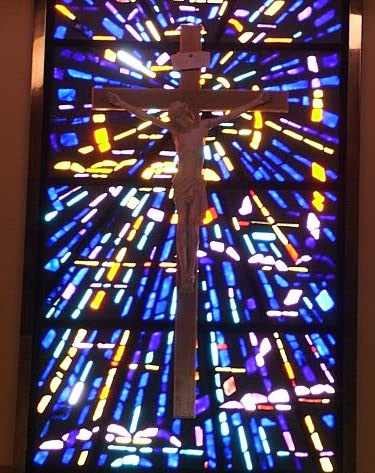“Mother Butler established a network of schools to shape girls into Catholic Women who would be lovers of God and leaders in their society.” Kathleen Connell, RSHM
Ground was broken for Marymount School of Palos Verdes on March 17, 1951, with the first shovel turned by Bishop Timothy Manning, with Mothers Gerard and Baptiste, along with others present for the blessing.
The school year opened in September 1952, with fifty students, ranging from first to tenth grades with the first 15 students graduating in June 1956. By September 1956 there were 136 High School and 237 Junior School students registered. As the number of students continued to increase, campus facilities expanded.
Long before the Second Vatican Council, the RSHM were committed to Evangelization Ad Gentes. The Mission Club played a large part in the Junior School exhibit of the Mother Butler Guild, the students contributing much needed items to lay missionaries serving foreign missions.Until the late 1960s, sisters maintained a strong presence in the Junior and High Schools. When that changed, the school experienced financial difficulties and in 1972 announced that the High School would close. The entire property was leased to a Parents Board, who took over the operation of the Junior School. Unable to manage it successfully, by November 1974, it was evident that this school could not continue.
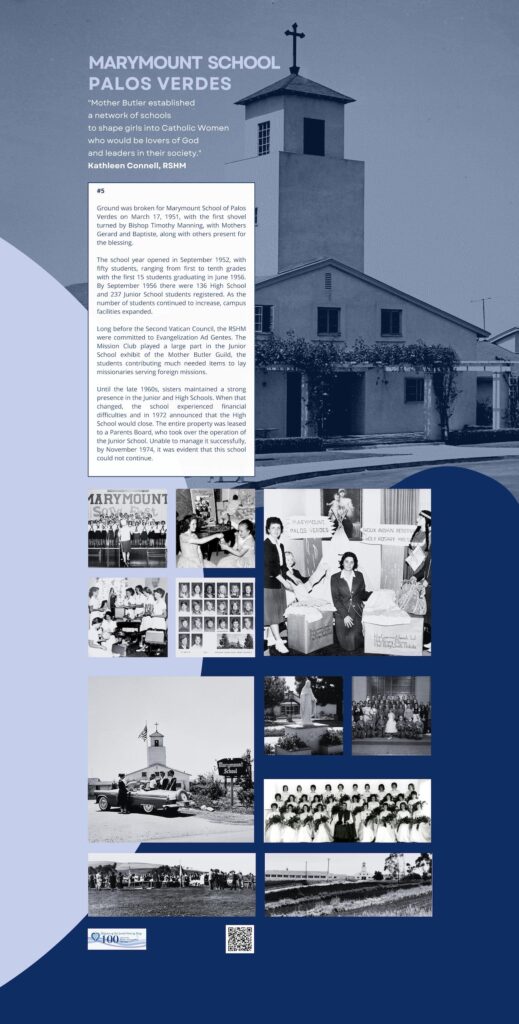
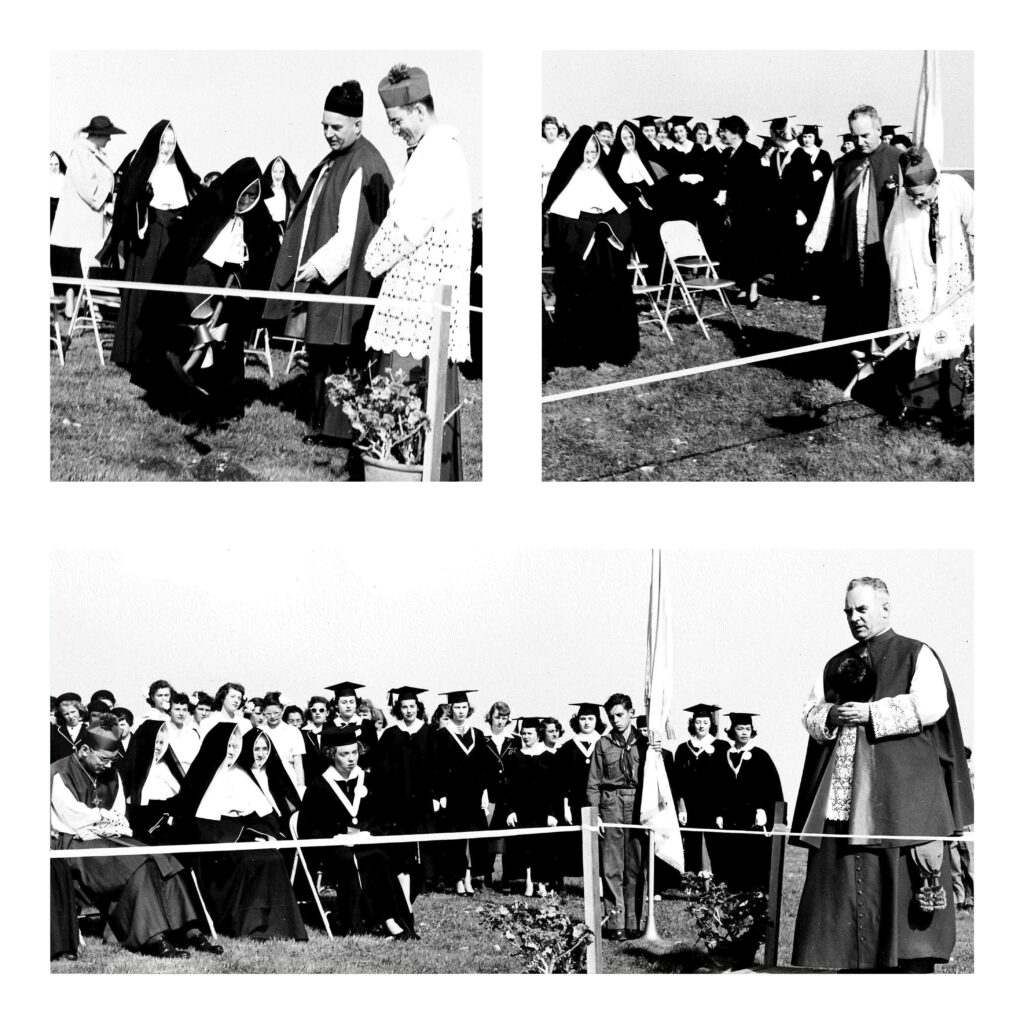
On March 17, 1951, the groundbreaking ceremony for the new foundation took place. Officiating the ceremony was His Excellency, Bishop Timothy Manning, surrounded by a distinguished assembly of guests. Among them were Very Reverend Mother M. Gerard, the Superior General, Reverend Mother Baptiste, the Assistant General, Monsignor George M. Scott as the Master of Ceremonies, and notable figures like Reverend Mother Gertrude Cain, Mother Cecilia Rafter, and Miss Nellie Cantwell.
Miss Valerie Price from Marymount College, Westwood, addressed the assembled guests.
Miss Drusita Eaton of Palos Verdes, first registered pupil of Marymount School of Palos Verdes, presented Reverend Mother General with a bouquet of flowers.
The San Pedro knights of Columbus and the alter boys, Scout Troop 208 and girls from Mary Star of the Sea School also attended. This ceremonial event not only laid the physical foundation for the school but also embodied the spirit of collaboration and community support.
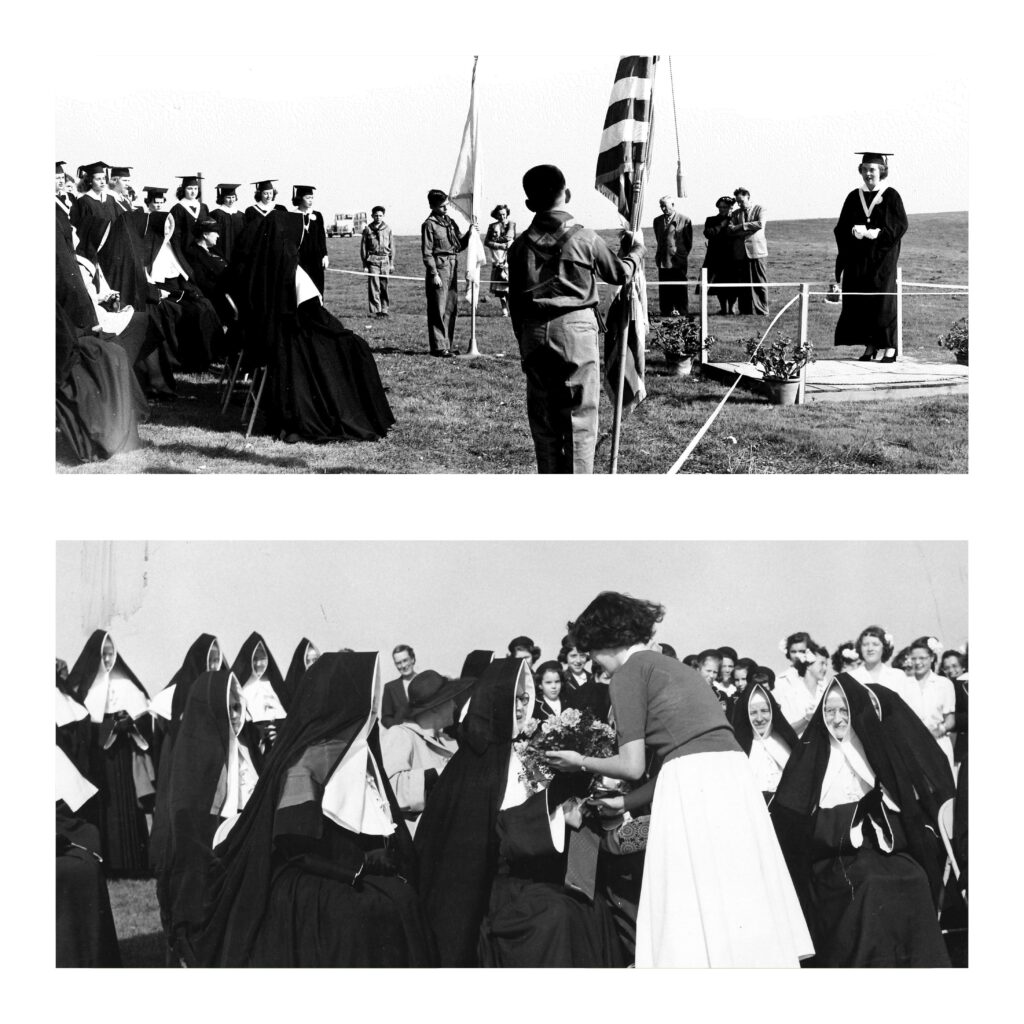
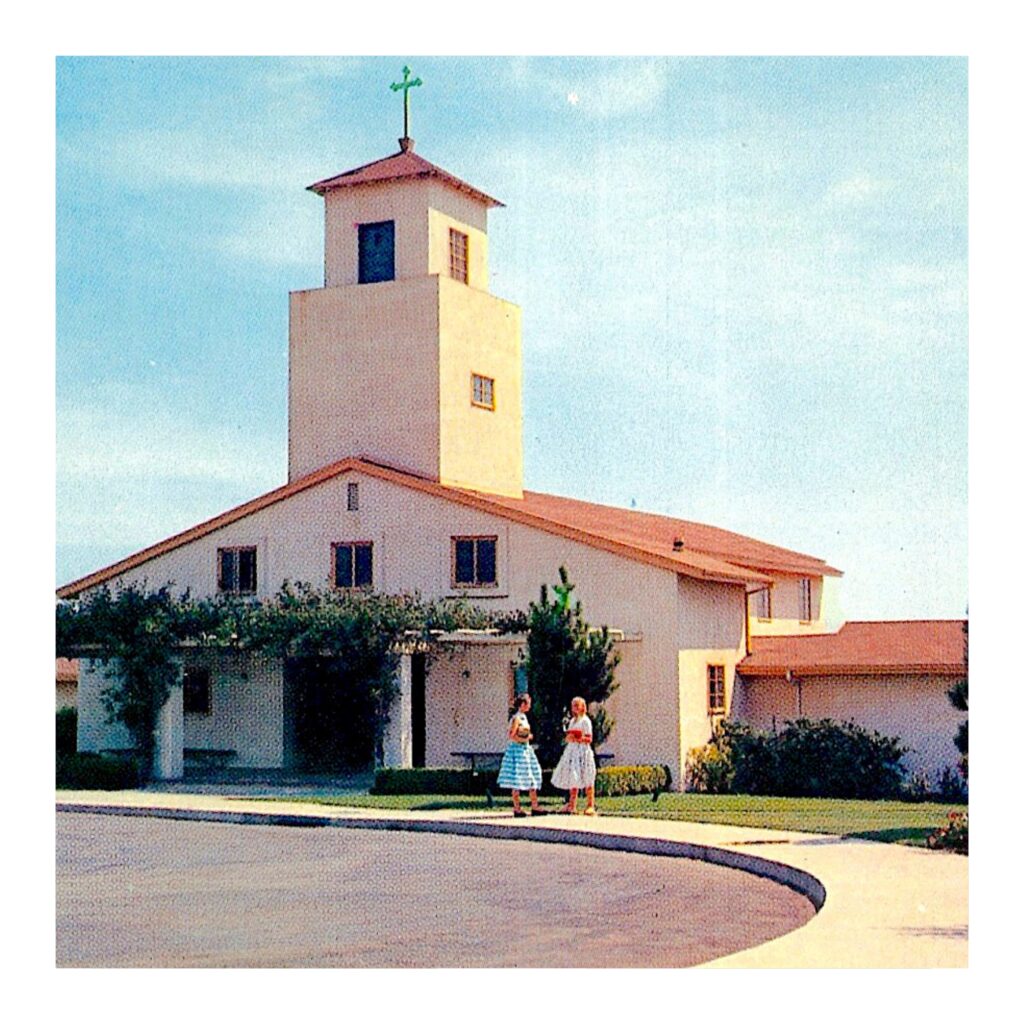
In the year 1951, the Marymount School of Palos Verdes marked its inception, as the ninth Marymount School worldwide. Other institutions bearing the Marymount name were scattered across diverse locations, including Tarrytown, New York; Westwood in Los Angeles; Fifth Avenue and 71st Street in New York; Santa Barbara, California; Arlington, Virginia; Quebec, Canada; and Bogota, Colombia. Each of these schools carried forward the legacy of Marymount, contributing to a global network dedicated to education, excellence, and community.
Designed by George J. Adams, the Marymount School of Palos Verdes unfolded as a 22,000-square-foot complex comprising five key buildings. These included a residence hall, school building, administration building with a chapel, cafeteria, and convent.
Nestled at the intersection of Crest Road and Palos Verdes Drive East in the picturesque Rolling Hills neighborhood of Palos Verdes, the campus was a testament to the harmonious blend of functionality and form. This location not only provided a serene and scenic backdrop for academic pursuits but also reflected the thoughtful consideration given to the integration of the school within the local community. The campus design, aimed to create a space where educational excellence could thrive in tandem with the natural beauty surrounding it.
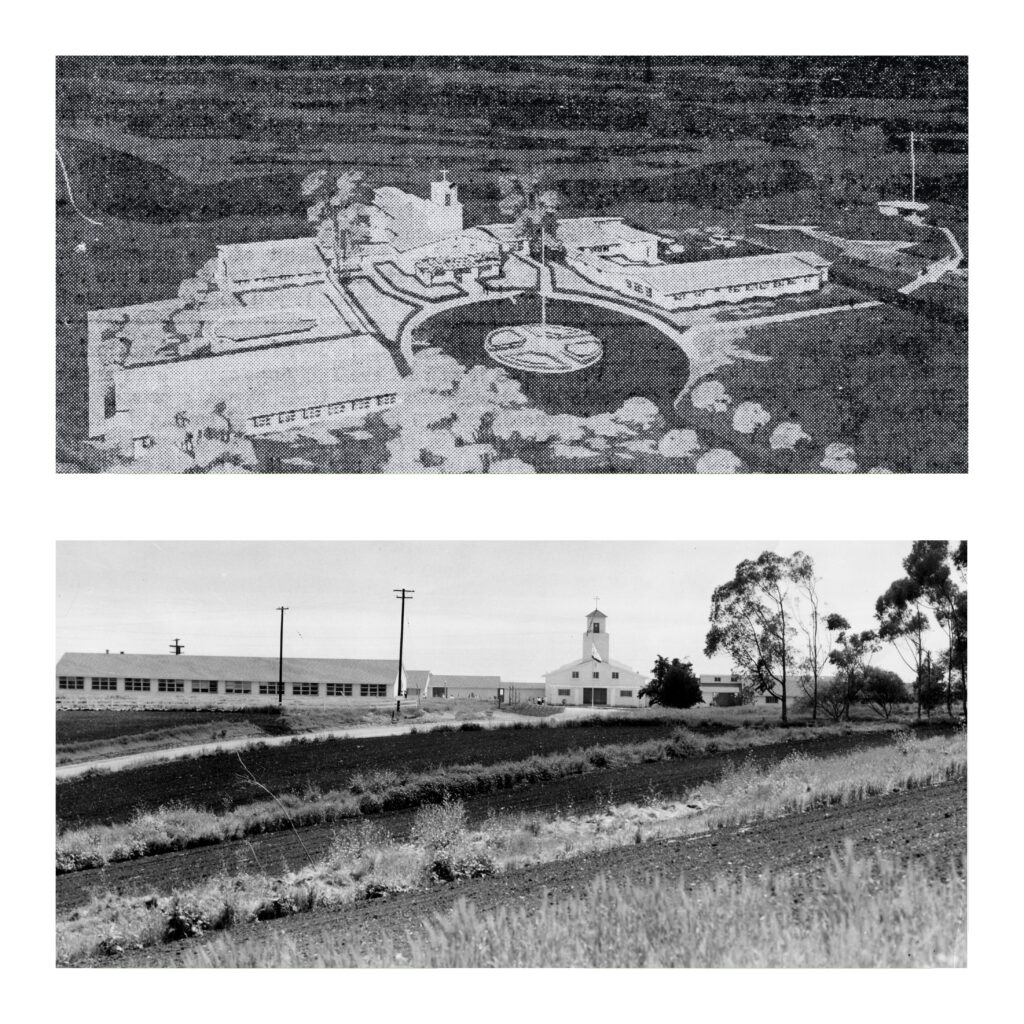

Marking the commencement of the school year on September 25, a total of fifty students, spanning from the first to the tenth grades, enrolled at Marymount School of Palos Verdes, which overlooks the Portuguese Bend and the Pacific Ocean.
The inaugural official ceremony unfolded on October 12, with Monsignor George M. Scott presiding over the symbolic raising of the flag on the school campus. This momentous occasion set the tone for a new chapter in Marymount’s journey, signifying both the beginning of a scholastic year and the establishment of cherished traditions.
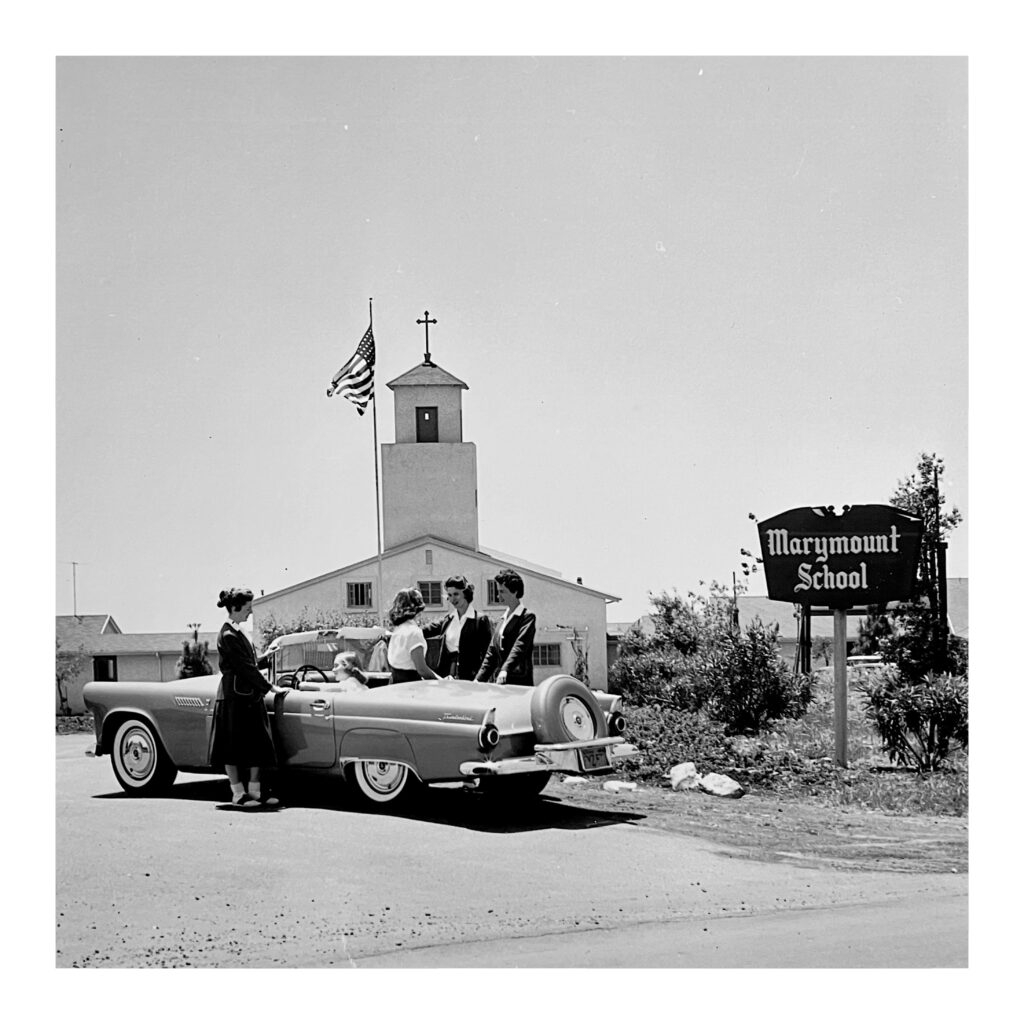
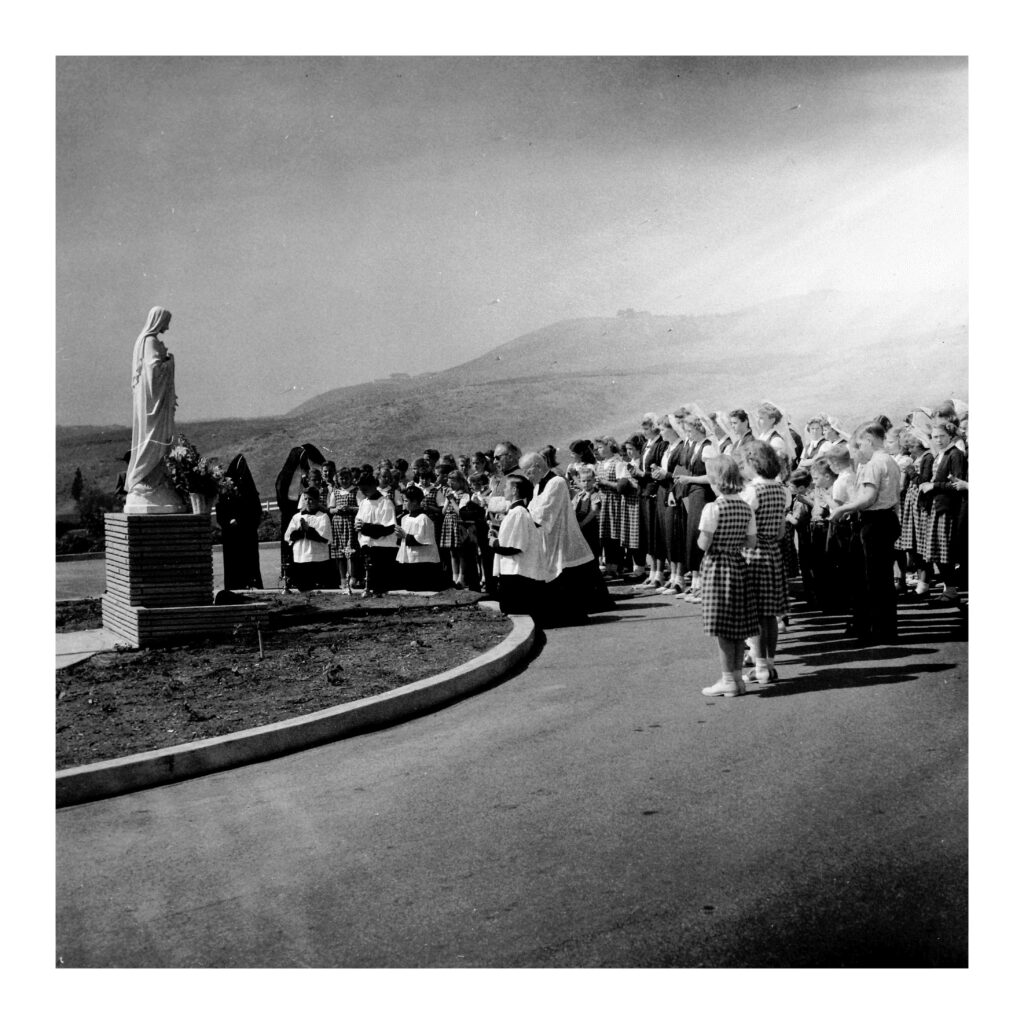
On March 27, 1953 during the Feast of Our Lady of Dolores, the campus welcomed a gathering of familiar faces who came to witness the dedication of the Shrine in honor of the Sacred Heart of Mary. A notable contribution to this sacred space was the statue of Our Lady, generously gifted by Mrs. Alfred Dubin in memory of her husband. The ceremony, presided over by Monsignor Scott, was marked by a collective recitation of the Rosary, fostering a sense of community and devotion among all in attendance.
Guided by President Barbara Merino, the Mission Club at Marymount played a significant role in the Junior exhibit of the Mother Butler Guild. The club’s contributions were diverse and impactful, including twenty-five communion dresses and veils, fourteen layettes, five sets of vestments, altar linens, numerous baby blankets, children’s clothing, a hundred thousand stamps, and fifty scrapbooks.

Through the dedicated efforts of the student lay missionaries, the club not only showcased its generosity but also demonstrated its commitment to various charitable causes.
It is because of Mother Butler’s concern for the world’s poor and her desire to set an example that, participating in and supporting the missions came to be a part of RSHM sponsored or related ministries.
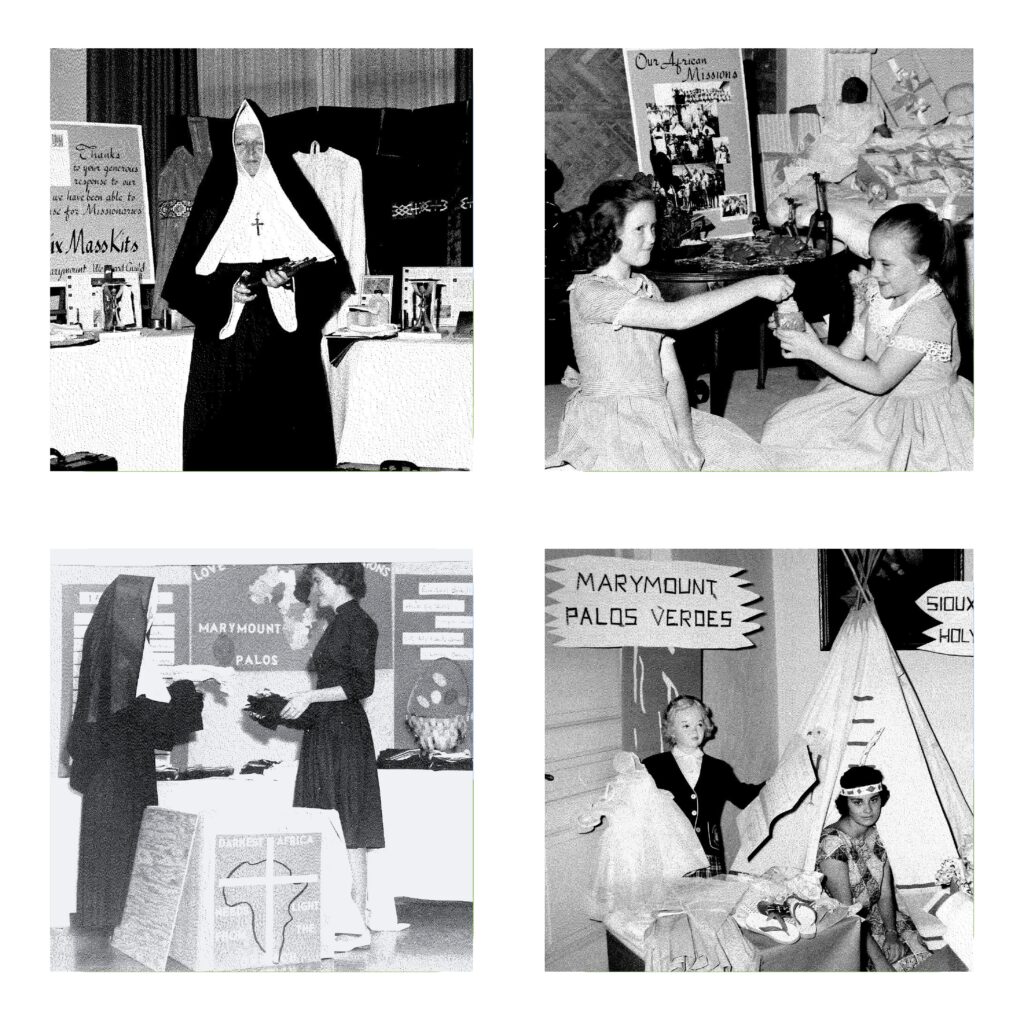
Window of Easter Dawn
Highlighting the sanctuary of Marymount Chapel in Palos Verdes, the “Window of Easter dawn”, eight by seventeen feet of stained faceted glass, forms a background for the hand-carved image of the crucified Savior. the quiet peace of the Sacred Face, marked by suffering, is heightened by the soft yet glowing tones of the window. Myriad colors fuse, and convey a unified tone and atmosphere of thoughtful peace and promise.
Strikingly lovely as the window is, its quiet beauty never detracts from the main interest of the sanctuary , the Crucified. It serves rather to complement in a subtle manner the pathos and hidden radiance of our crucified God. Conceived with the idea of aiding the prayerful soul in its reflections on eternal truths, the window inspires a meditative, spiritual mood.
